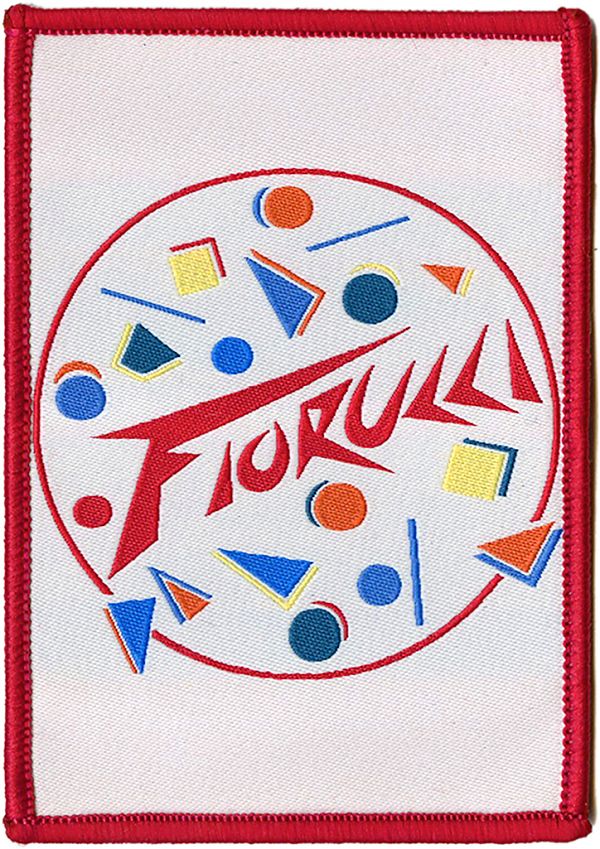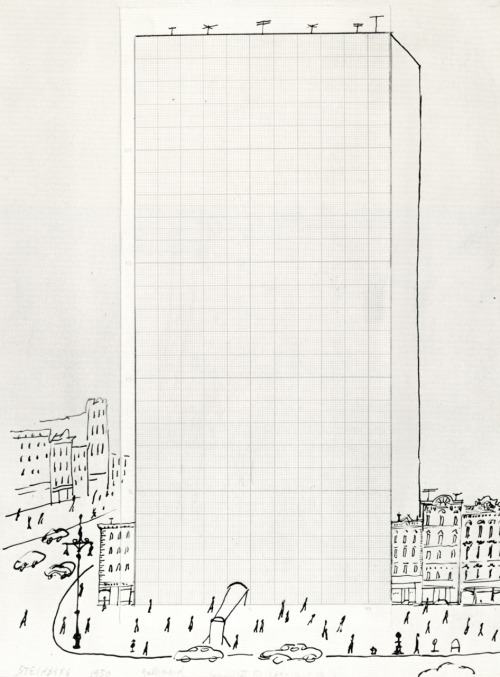Search for ‘Alexandra Lange’ (7 articles found)
Walking in Memphis

Fiorucci, 1984. Via It’s Nice That.
This essay was originally published in the inaugural issue of August Journal as “Learning from Milan.”
In the eleventh grade, at a small Quaker school in Durham, North Carolina, I wrote a history paper about Memphis. Not the city some ten hours away, but the seven-year-old Italian design movement known for its subversive combination of plastic laminate, abstract pattern, and totemic shapes. The cover of my report was blue, and on it I attempted my own hand-lettered version of a jazzed Memphis typeface. Its contents have since been lost to history, as has my teacher’s reaction to the celebration of plastic, color and artificiality at a school where the wind whistled between the vertical siding and, when the wood stove proved inadequate, we just wore our coats inside. Style was not one of the virtues taught here—critical thinking was—and yet a previous generation of upper schoolers had included a boy who thought he was David Bowie, and one of my lunch companions dressed as if she were about to appear in a Guns N’ Roses video.

Storage boxes arranged and labeled by Girard. Photo: Andreas Sutterlin/Alexander Girard Estate, Vitra Design Museum.
101 Spring Street Restored

Donald Judd with students, 1974. Photograph: Barbara Quinn/Courtesy Judd Foundation Archives.
There’s a shovel attached to the wall on the fifth floor of 101 Spring Street. “Why didn’t they keep that downstairs?” asked a recent visitor.
“It’s a Duchamp,” the guide replied.
It’s like that on every floor of the artist Donald Judd’s former home and studio. There’s a Stuart Davis in the baby’s room and a Duchamp bottle rack up in the sleeping loft. A 1967 Frank Stella protractor series painting has pride of place on the fourth floor, used for entertaining, but a drawing by Stella hangs against an (attractively) decaying wall in the stairwell, at home with the African masks. Judd surrounded himself with design that suited his aesthetic as well as his art. The high chair is Thonet. Zigzag chairs by Gerrit Rietveld pulled up to his own table. Czech glassware tucked into the clever, deep well of another table. The first thing Judd saw every morning: a 1969 Dan Flavin neon sculpture, chasséing the length of the room, tubes of red and blue light framing his western view.

The exterior of 101 Spring Street, 1972. Photograph: Paul Katz/Courtesy Judd Foundation Archives.
Museum-quality art, museum-quality design, and the detritus of domestic life occupy all five floors of the former garment factory, now the only single-occupancy building in all of SoHo. After a three-year, twenty-three-million-dollar restoration process led by the New York-based Architecture Research Office, the building will open for guided tours in June, offering an opportunity to see Judd’s work as he intended it to be seen, and to dwell, for an hour or so, in an individual vision of life as a work of art.

D.D. and Leslie Tillet, 1947
The American Restaurant, Kansas City (1974)

Warren Platner designed the American Restaurant in Kansas City in 1974 as part of a complex of modern buildings commissioned by the Hall family of Hallmark Cards. He described the bentwood, brass and lipstick-red interior as “like a huge lace Valentine.”
Katherine Hepburn and Rossano Brazzi in a scene from 'Summertime', 1955

I love how uncomfortable Katherine Hepburn always looks when forced to gaze lovingly into some co-star’s eyes. It really does not become her. It’s like a tall woman wearing flats and a slouch.

